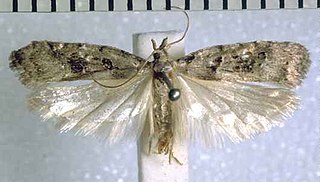
Heterocrossa canescens is a species of moth in the family Carposinidae. It is endemic to New Zealand. This species has been observed in Aoraki / Mount Cook National Park and in the Southern Alps. The larvae of this species feed on the fruits and flowers of endemic to New Zealand species in the genus Gaultheria. Adult moths are on the wing in November and from January to March.
Heterocrossa ignobilis is a species of moth in the family Carposinidae. It is endemic to New Zealand.

Heterocrossa contactella is a species of moth in the family Carposinidae. It is endemic to New Zealand.
Heterocrossa epomiana is a species moth in the family Carposinidae. It is endemic to New Zealand.

Heterocrossa eriphylla, also known as the lichen snoutlet moth, is a species of moth in the family Carposinidae. It is endemic to New Zealand. The larvae of this species feed on the healing wounds of New Zealand beech trees.

Heterocrossa exochana is a species of moth in the family Carposinidae. It is endemic to New Zealand.

Heterocrossa gonosemana is a species of moth in the family Carposinidae. It is endemic to New Zealand.

Heterocrossa iophaea is a species of moth in the family Carposinidae. It is endemic to New Zealand.
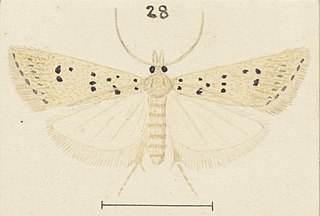
Heterocrossa maculosa is a species of moth in the family Carposinidae. It is endemic to New Zealand. It is classified as "Data Deficient" by the Department of Conservation.

Heterocrossa is a genus of moths in the Carposinidae family. It is endemic to New Zealand. This genus was previously regarded as a synonym of the genus Carposina. However Elwood C. Zimmerman in Insects of Hawaii removed Heterocrossa from synonymy with Carposina. Zimmerman argued that as the genitalia of Heterocrossa and Carposina are distinct, Heterocrossa should not be regarded as a synonym of Carposina. This was agreed with by John S. Dugdale in his annotated catalogue of New Zealand lepidoptera.

Tingena loxotis is a species of moth in the family Oecophoridae. This species is endemic to New Zealand and is found in the North Island. This species is found in gardens and are known to enter houses. Adults are on the wing in December and January. It is classified as "Data Deficient" by the Department of Conservation.

Tingena anaema is a species of moth in the family Oecophoridae. It is endemic to New Zealand and has been collected at Lake Wakatipu, Invercargill and Stewart Island / Rakiura. The adults of the species are on the wing in December.
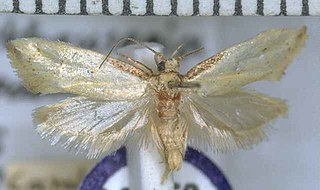
Tingena apanthes is a species of moth in the family Oecophoridae. It is endemic to New Zealand and found in the North Island. The adults are on the wing from October to December. It appears associated with Leptospermum species and it has been hypothesised that the appearance of the adults of this species imitates faded Leptospermum leaves.
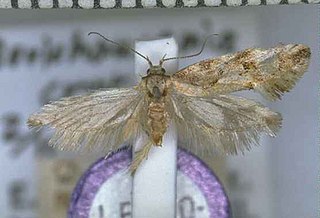
Tingena crotala is a species of moth in the family Oecophoridae. It is endemic to New Zealand and is found both in the North and South Islands. This species inhabits native forest and is on the wing in November and December.

Tingena homodoxa is a species of moth in the family Oecophoridae. It is endemic to New Zealand and is found in the southern parts of the South Island. It inhabits open grassy slopes and is on the wing from November until January.

Tingena horaea is a species of moth in the family Oecophoridae. It is endemic to New Zealand and have been observed in both the North and South Islands. The adults are on the wing in January.

Tingena letharga is a species of moth in the family Oecophoridae. It is endemic to New Zealand and has been observed in Otago. Adults are on the wing in December and January.

Tingena melanamma is a species of moth in the family Oecophoridae. It is endemic to New Zealand and has been observed in Marlborough, Otago and Southland.
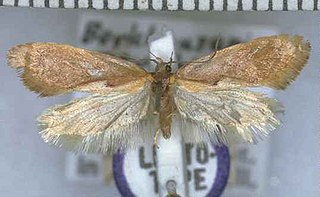
Tingena perichlora is a species of moth in the family Oecophoridae. It is endemic to New Zealand and has been observed in the southern parts of the South Island. This species appears to inhabit manuka scrub. Adults of this species are on the wing from October to January.

Tingena siderodeta is a species of moth in the family Oecophoridae. It is endemic to New Zealand and is found throughout the country. This species prefers to inhabit native forest and scrubland but has also been found to be common in cultivated landscapes. The larvae are litter feeders and have been observed in Kanuka and Manuka forest. The adult moths are on the wing from October to February and are day flying but have also been trapped at night.


















